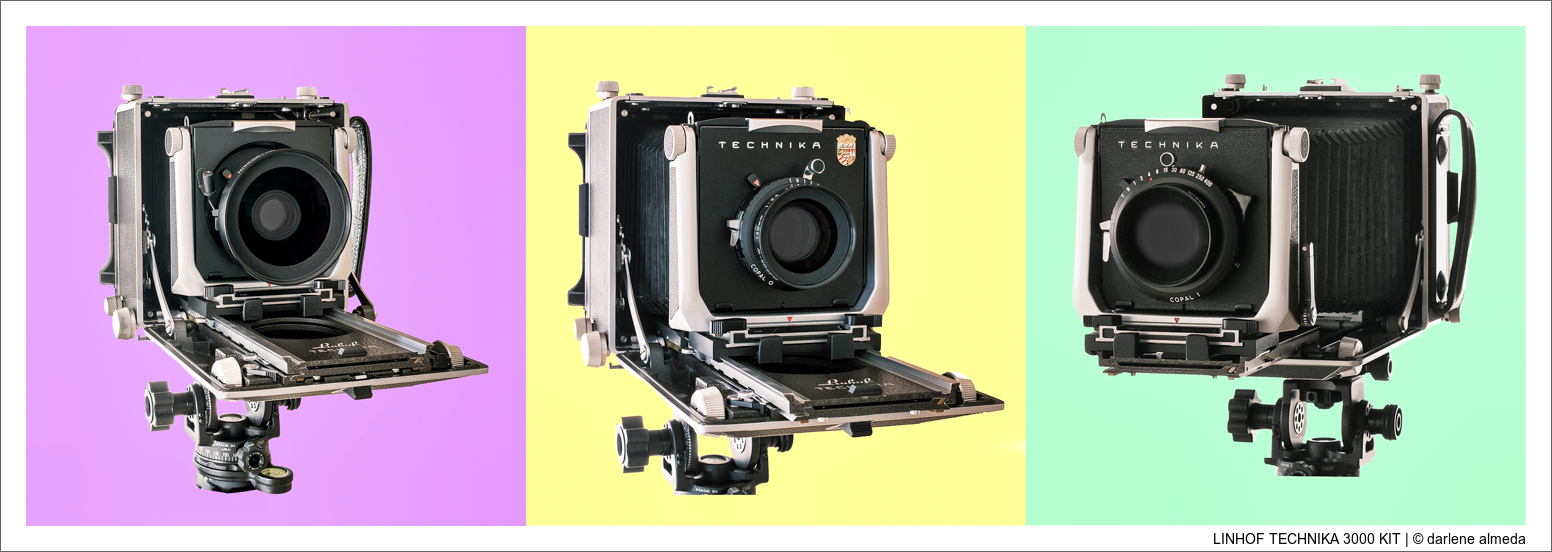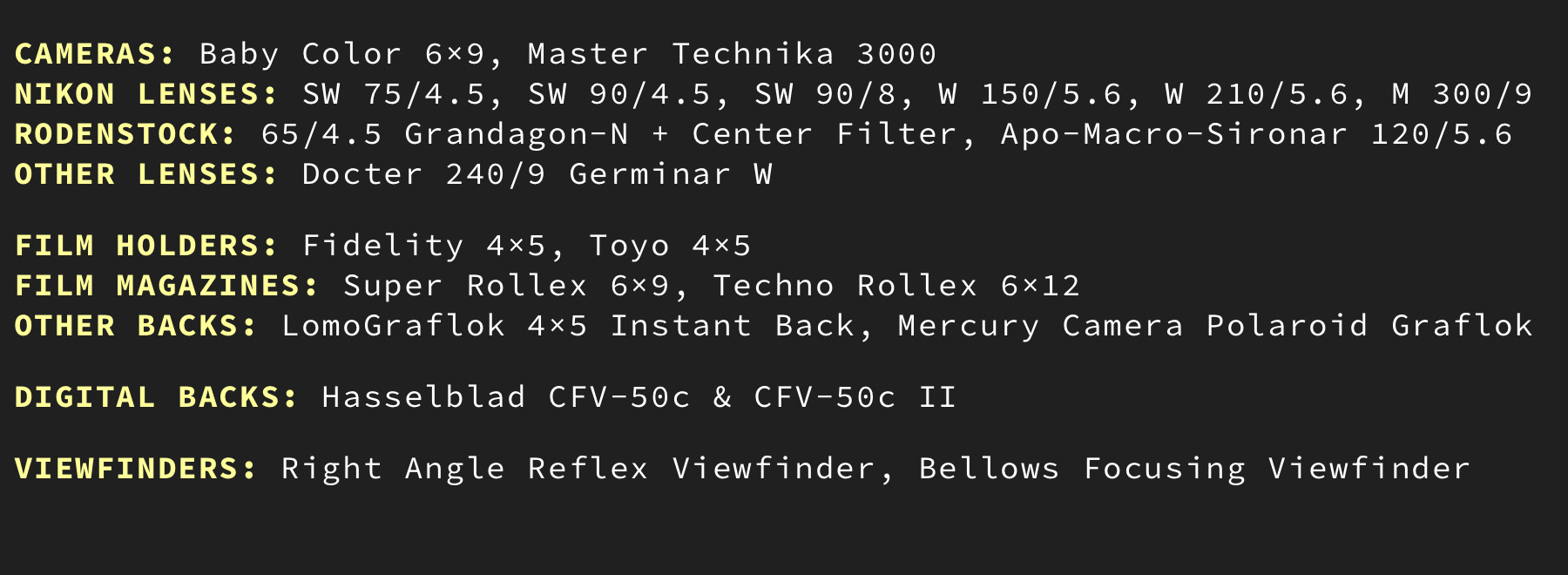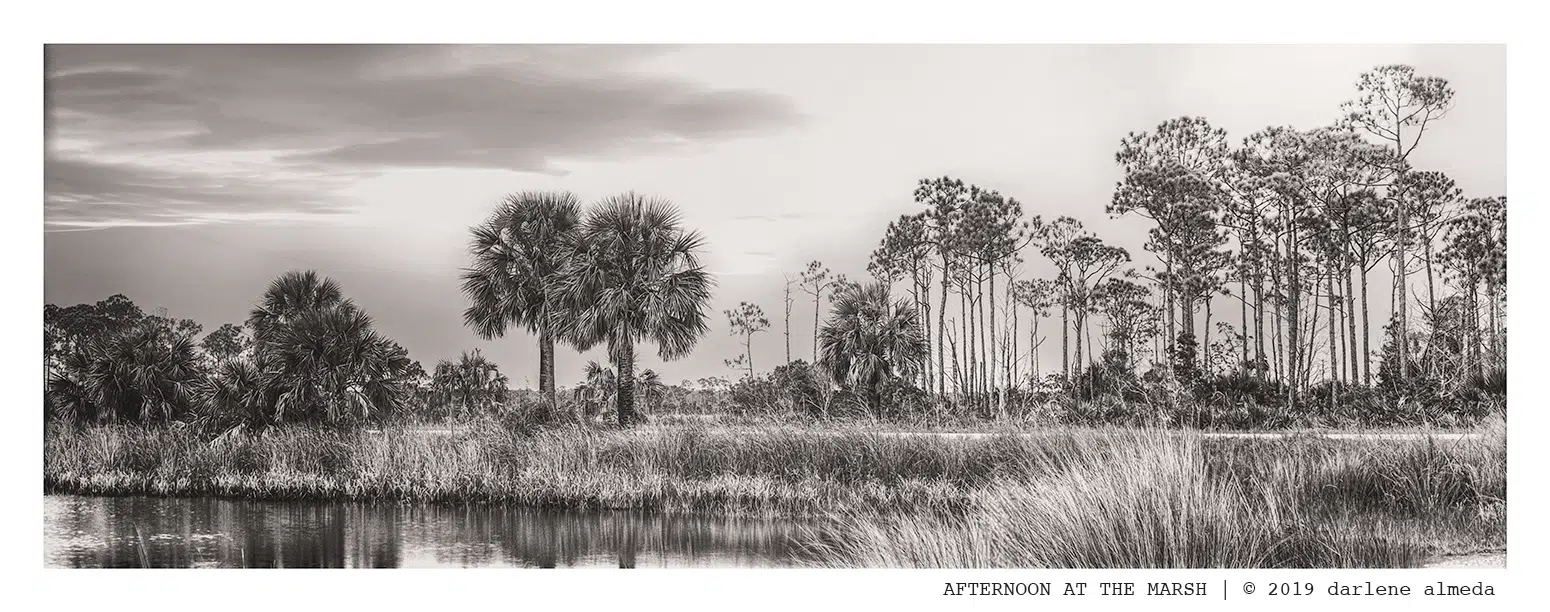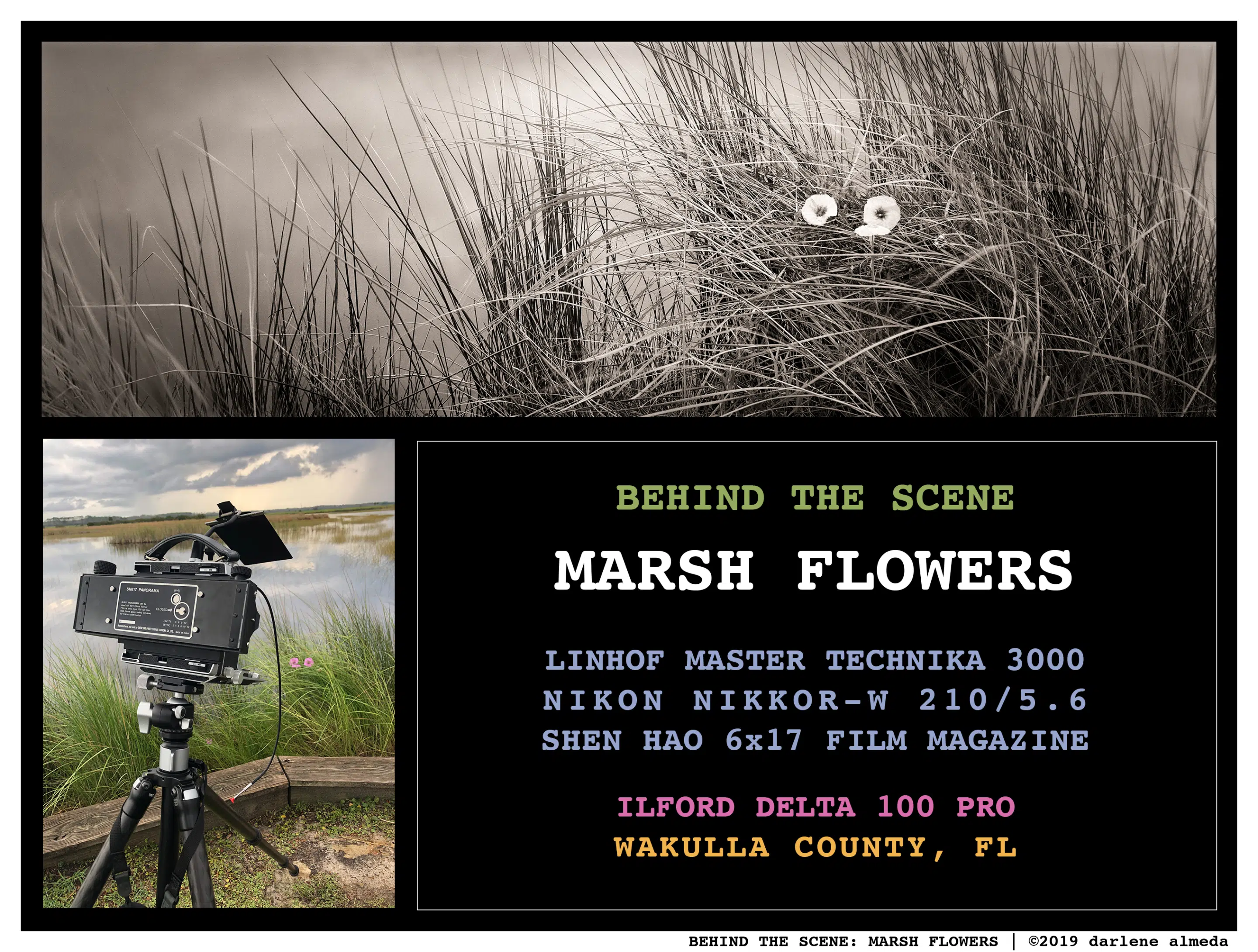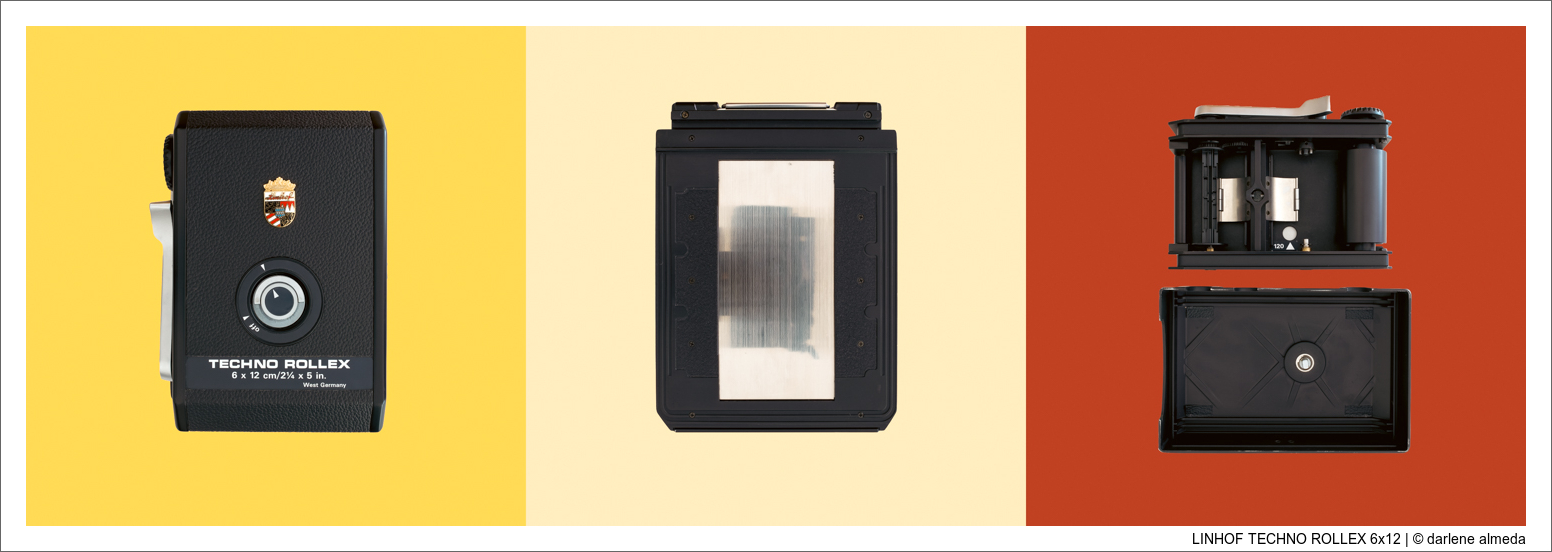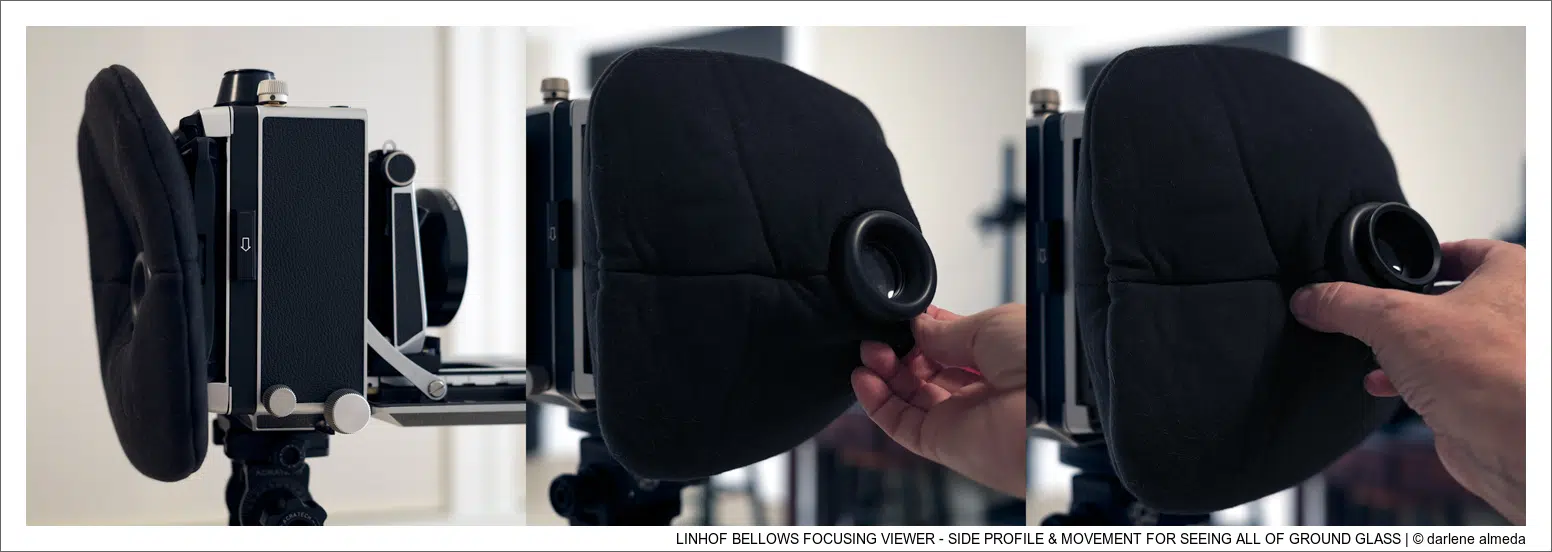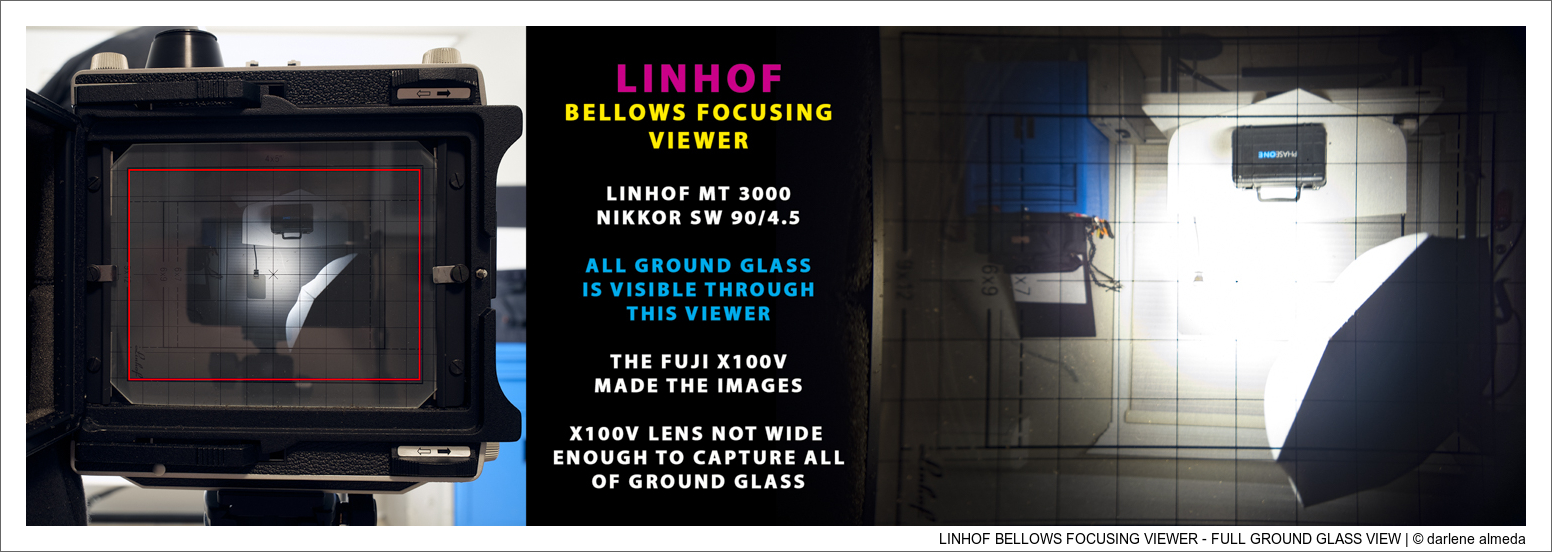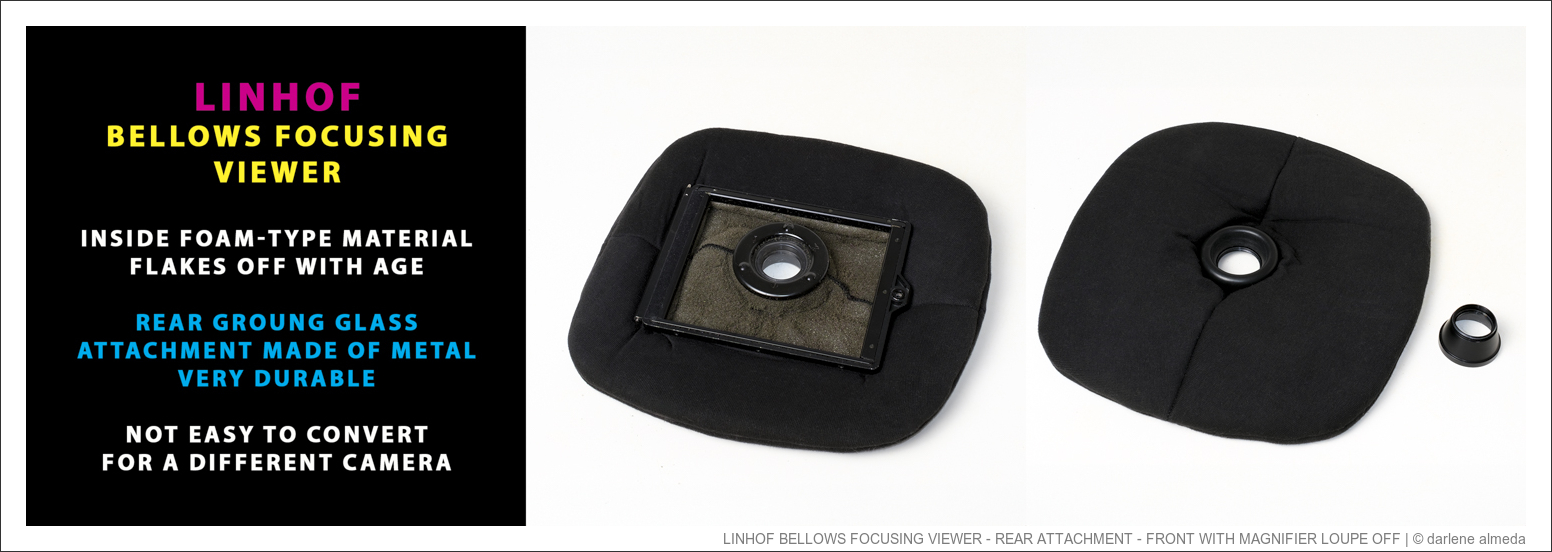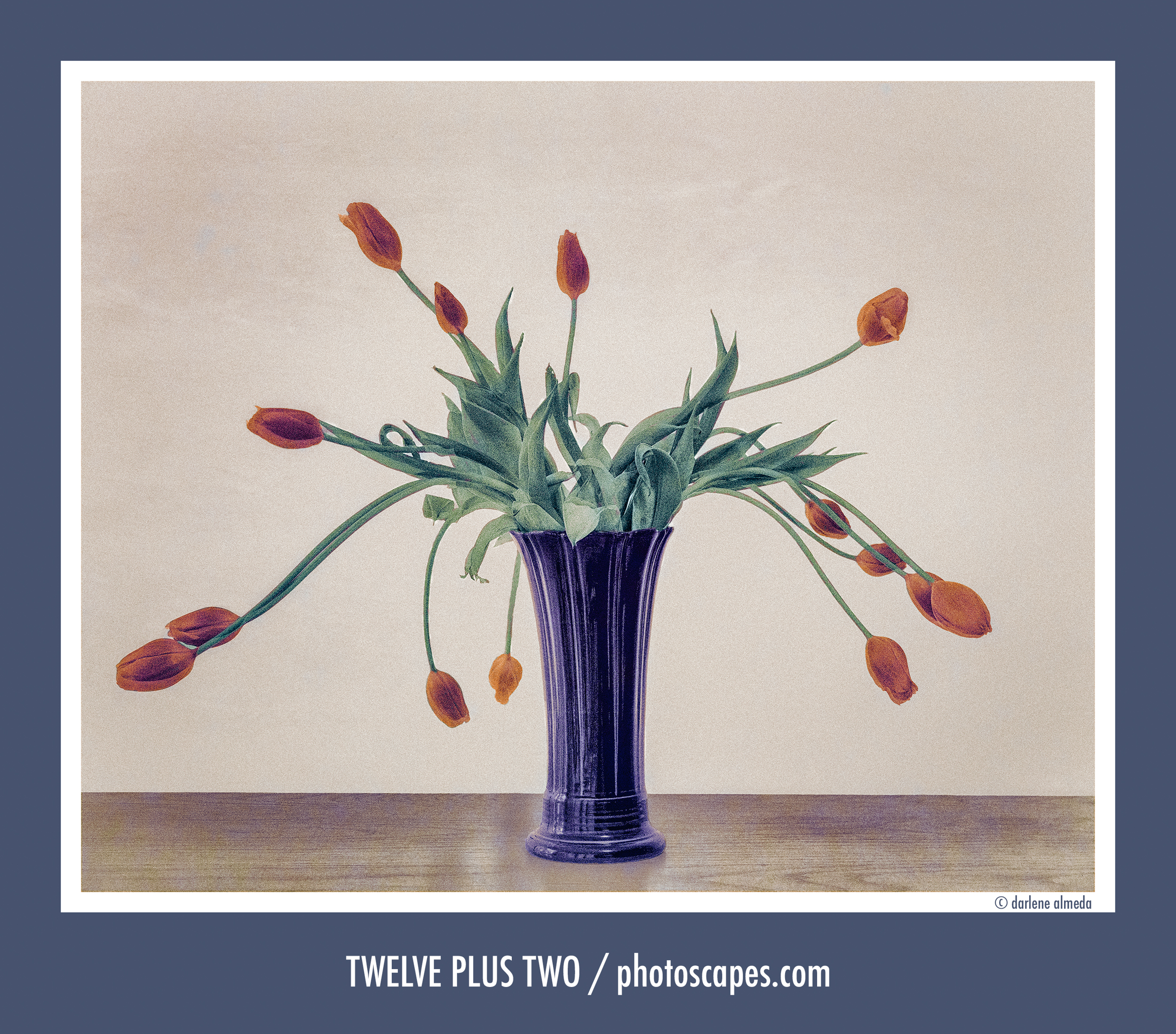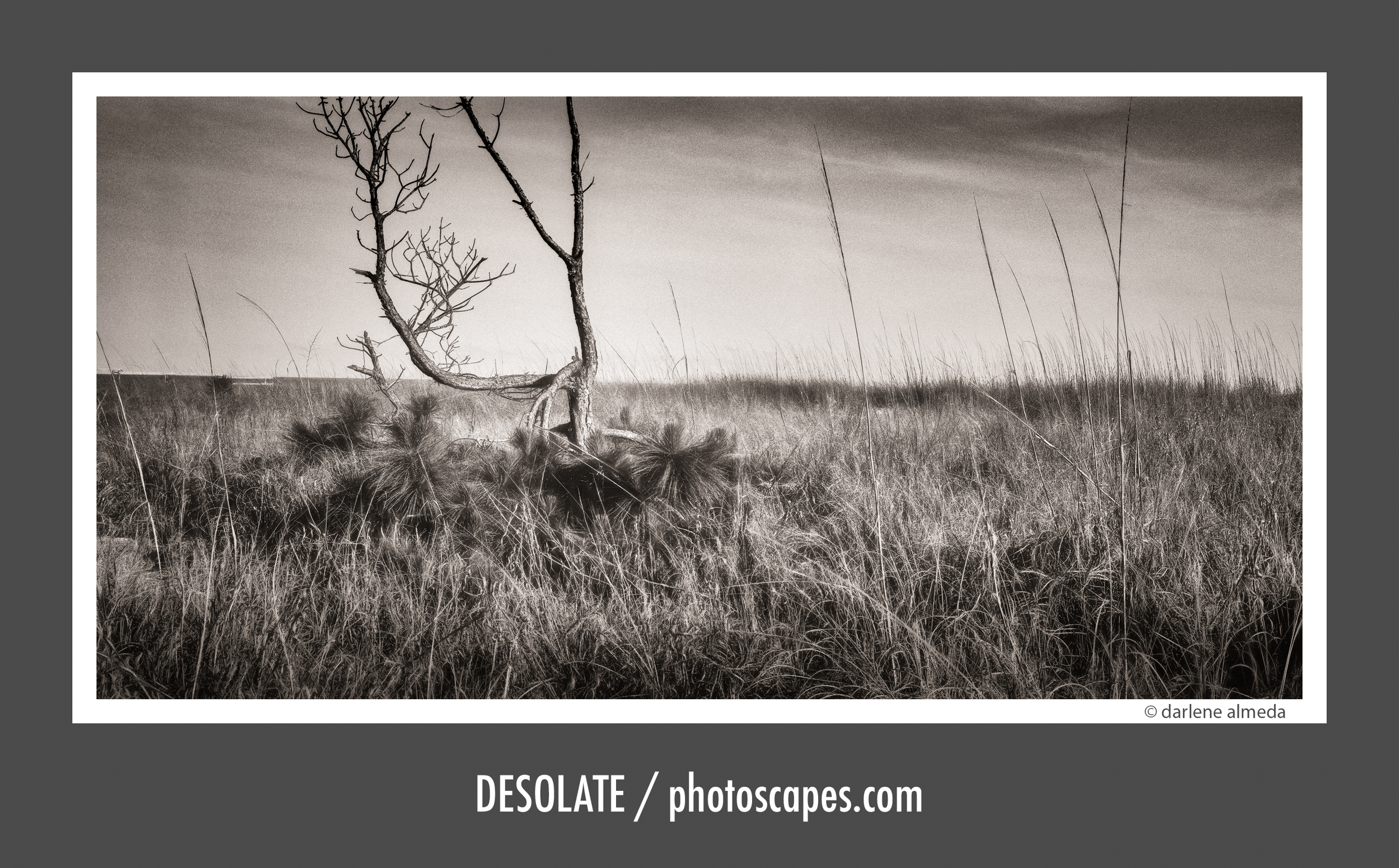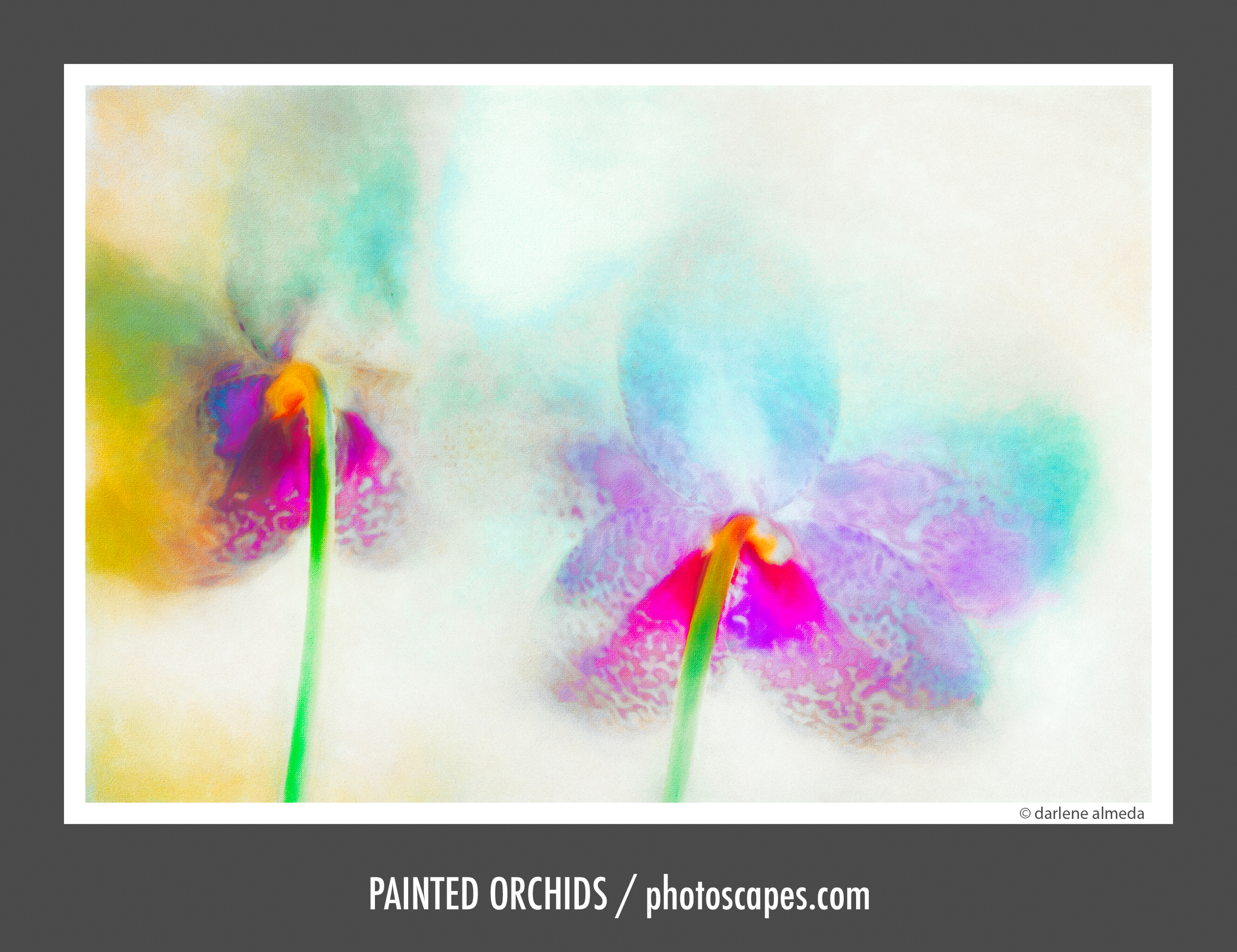LINHOF MT 3000 + Nikon 90/4.5, 150/5.6, 300/9 KIT
INTRO
Linhof is a highly respected camera manufacturer known for top-quality craftsmanship and precise engineering. Professional photographers, especially those specializing in architecture, landscape, and studio photography, favor Linhof view cameras for their superior image quality and versatility. My first Linhof view camera was a 6×9 Baby Color, and I later upgraded to a Linhof 3000. This modular camera provides exceptional precision, close-tolerance engineering, and excellent build quality. Linhof products consistently meet or exceed expectations. I wish my Ebony RSW had a Linhof back so I could use Linhof accessories with it; that’s how great their system is. Below is a record of the Linhof cameras and accessories I have used. I can be contacted for questions about my experience with these items.
LINHOF RELATED LINKS
LINHOF: website
LINHOF: historical
LINHOF: price list
LINHOF “BABY” COLOR 6×9
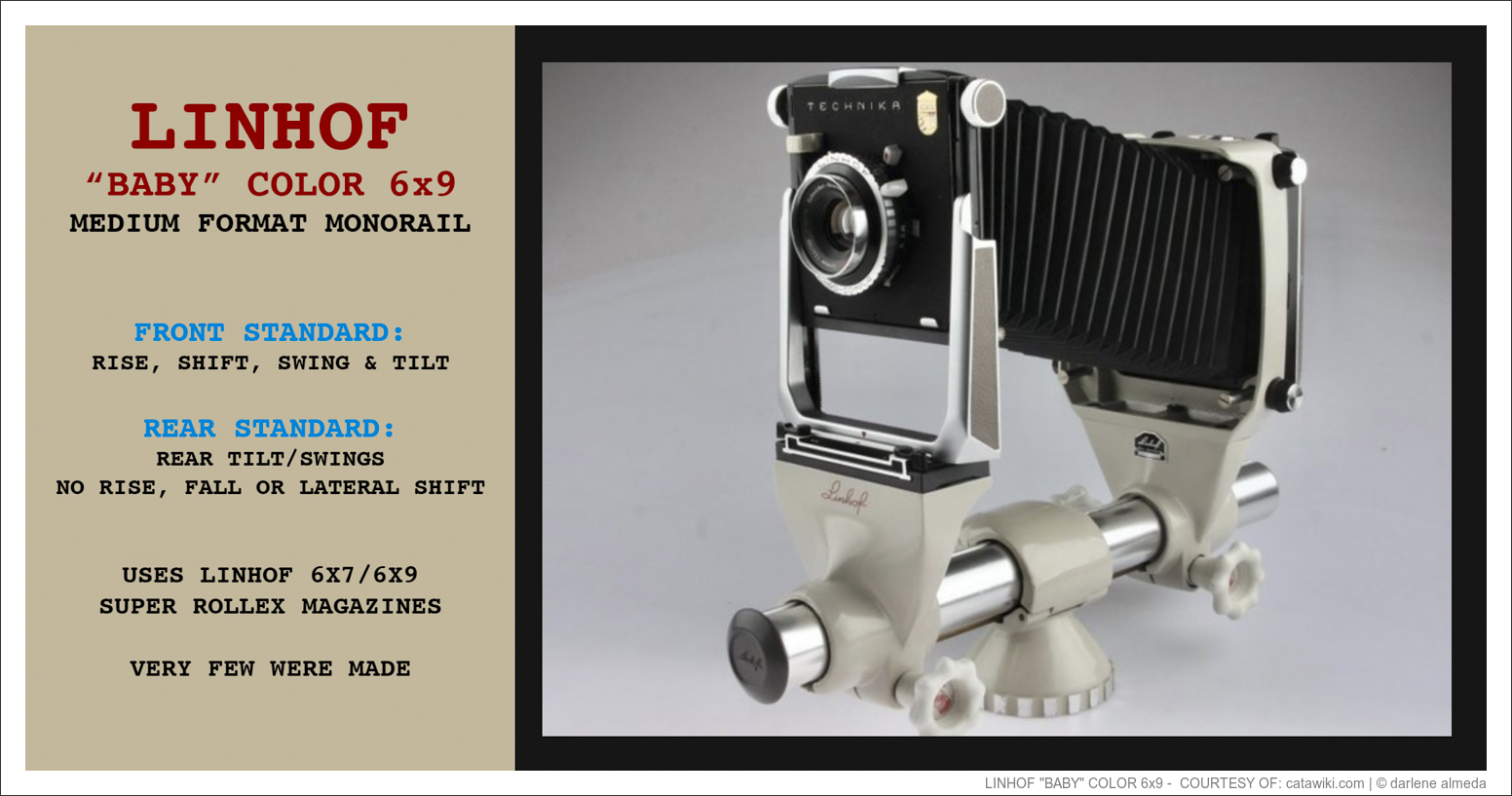
LINHOF “BABY” COLOR 6×9
The Linhof Baby Color 6×9 was my introduction to Linhof cameras. It is a small monorail camera that is minimal to operate by today’s standards because of its limited rear movements. Limited rear movements can make for better use with a digital back.
The Baby I had was built in 1964, according to documents that came with the camera. I shot with it in the studio for about two years, but because of its collectible condition, I accepted an excellent price from a collector who would better care for it (showcase it rather than shoot with it).
IMAGE: “HIBISCUS” MADE USING LINHOF “BABY” COLOR 6×9
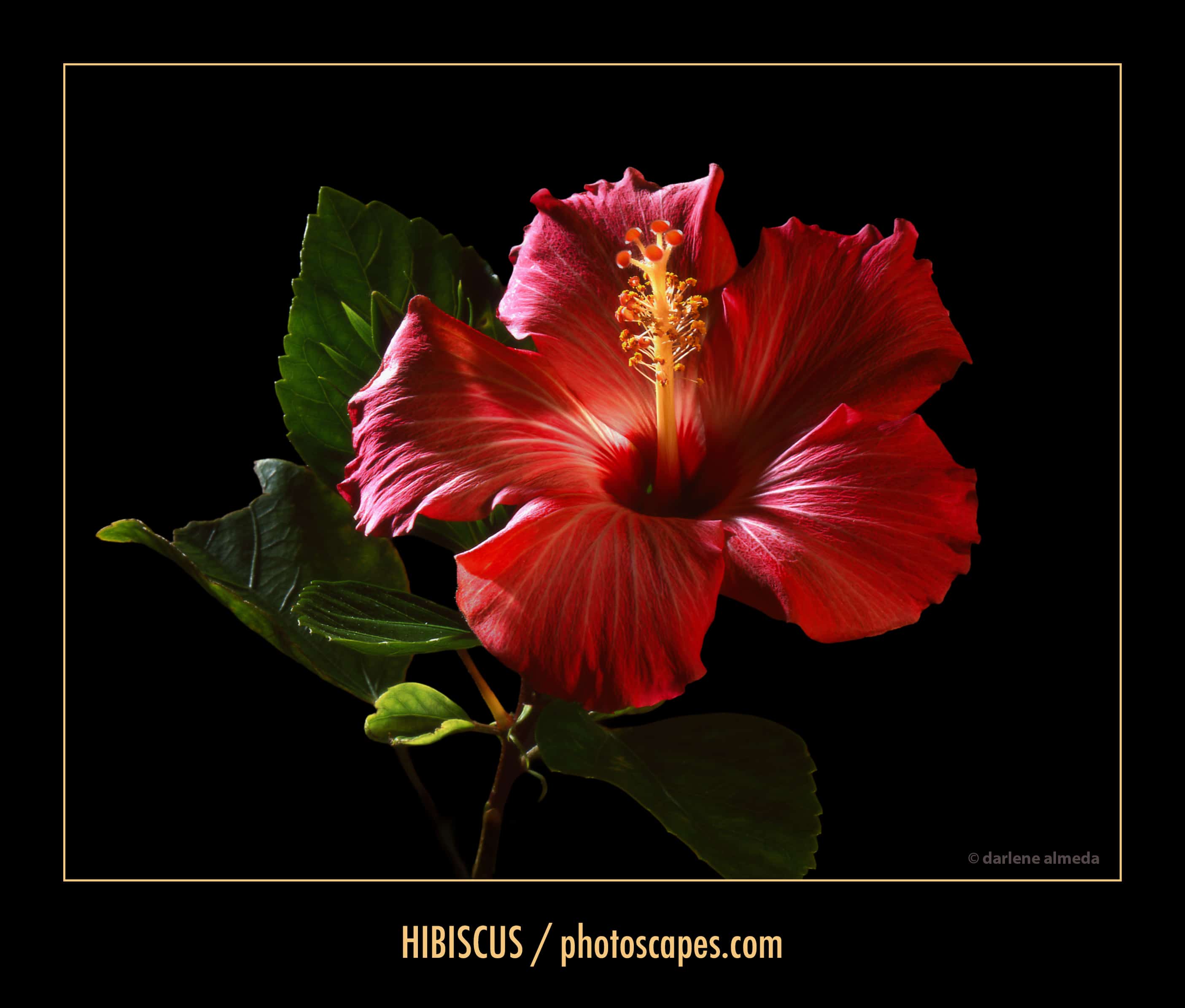
CAMERA WORK: LINHOF COLOR 6×9 + Rodenstock Macro 120/5.6 + Ektachrome
The Baby was a charming little monorail in its day, capable of producing some truly beautiful images. I always found it easy to use, though it did have its limitations. The photo above is one of my favorites from that camera. Recently, I came across the original Linhof 6×9 cut film holder tucked away in my gear closet—it brought back a smile. I only ever shot it with a Linhof Super Rollex 6×9 magazine, so I can’t really speak for the cut film holder. Do I miss the Baby? Not particularly, but I’m glad I had the chance to shoot with it.
LINHOF MASTER TECHNIKA 3000
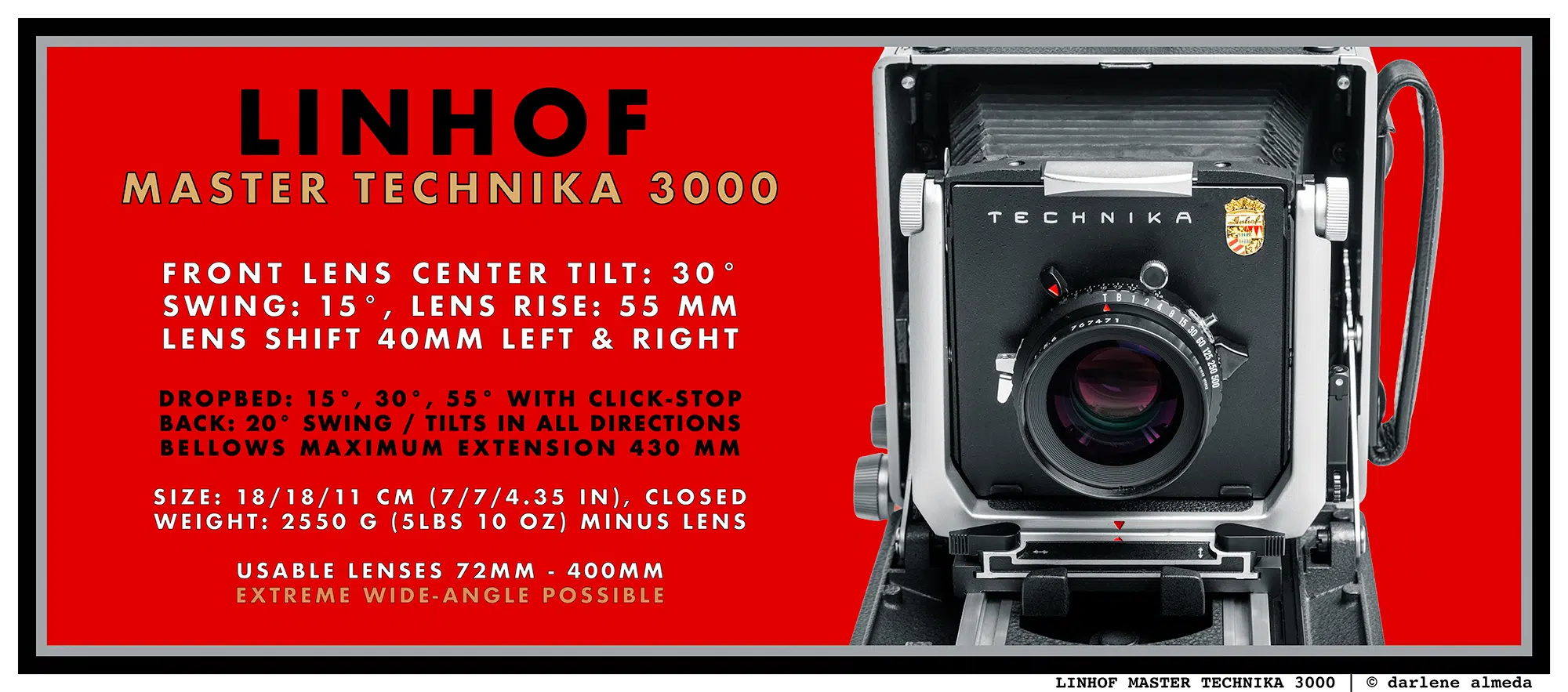
LINHOF MASTER TECHNIKA 3000 + NIKKOR W 150/5.6
When the time came to replace my lovely Ebony wood field with a metal field for better rear standard stability when working with a digital back, I wanted a Linhof Master Technika (MT). I found a used MT 3000 for a great price, and it is a wonderfully versatile camera. It is compact, easy to use, and sets up quickly, and it has accessories I like. Everything is great except when I want to shoot with my Rodenstock Grandagon 65/4.5.
I have shot my 65 with it, but it is more of a hassle than I care for out in the landscape. Shooting the Nikkor 90/4.5 is not a hassle. But why is it a hassle, you may ask? You have to drop the bed and raise the door on the top of the box, but even then, I have to be very careful and not tilt or move too much, or I may get a piece of the camera in the frame. If you have the time to tweak it, you can get there, but I prefer to spend less time fiddling with a camera alone out in the landscape.
I am a petite female who likes shooting alone. I cannot tell you how often I have had to pack it up and leave quickly because someone got the idea to approach me. Stay away from female photographers in the landscape or on the streets with their heads down, focusing on their camera, or you might get bear-sprayed or worse. I need a quick way to shoot with wide-angle lenses on a 4×5; unfortunately, my MT 3000 is not set up that way.
After struggling with what to do for a couple of years, I decided to keep the Linhof primarily in the studio for art and product shooting, and return to an Ebony RSW45 for landscape work. The MT 3000 works great for the type of product shooting I do, as using 120 macro, 210, or 300 lenses is never a problem. I do not want to part with the MT 3000; I love using it too much, but it is not a great camera for shooting my 65, and I love that lens.
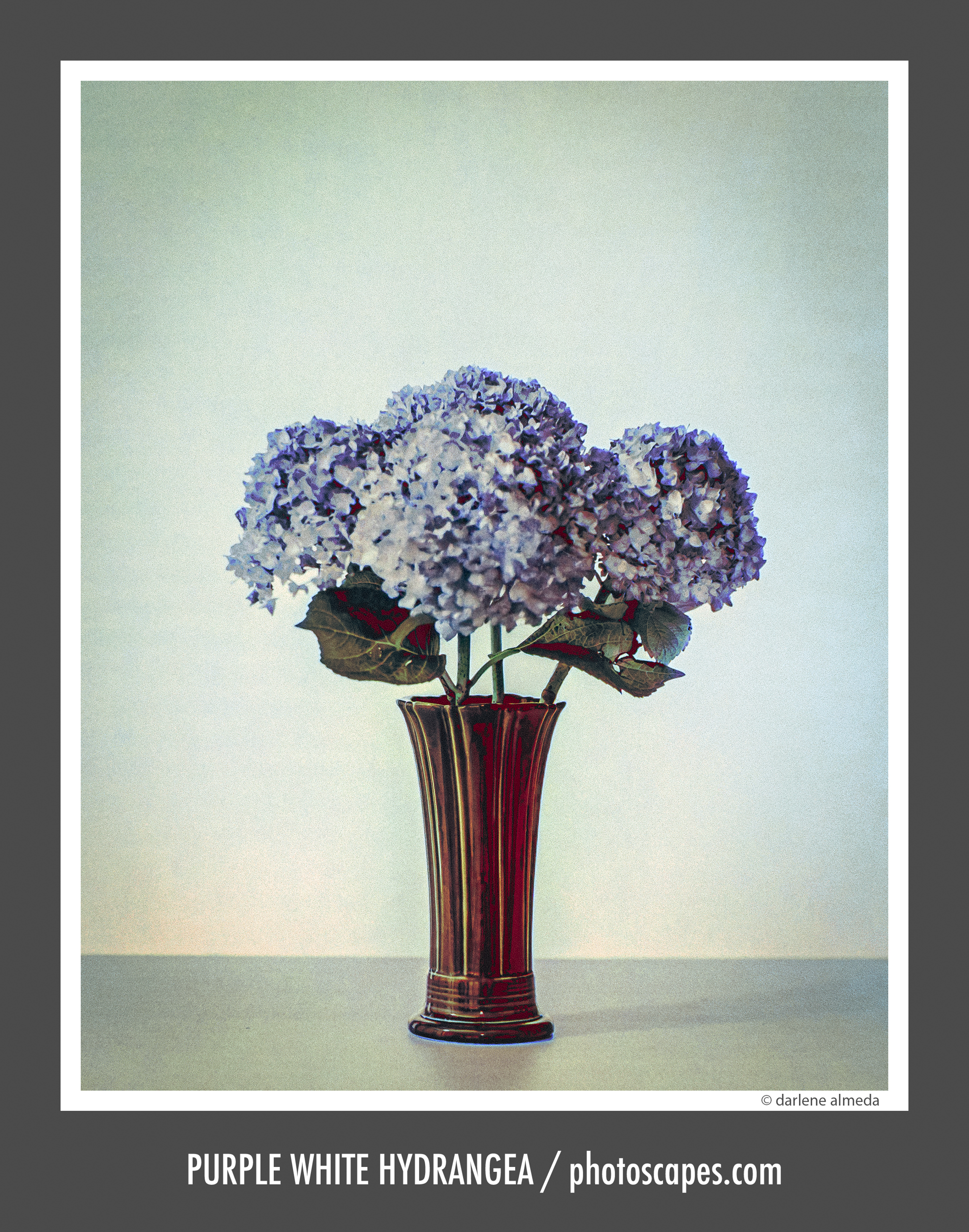
LINHOF MASTER TECHNIKA 3000 + NIKKOR W 150/5.6 + HANDCOLORING
Dislikes: I already stated how I dislike the MT 3000 with my 65/4.5, but there are two other areas where the MT 3000 does not work for me. These will only affect some photographers, but I wanted to inform you if you are reading this.
(1) I use a custom-made Hasselblad V lens adapter with my Sinar Norma and Ebony cameras. It will not work on the MT 3000 even though it is built on a Linhof-style board. The front of the camera does not allow me to adjust the lens controls. Now, Linhof did not design their cameras to be used with other manufacturers’ components, but this adapter still works on my other 4×5 cameras.
(2) My LomoGraflok 4×5 Instant Back (LGB) fits onto the Graflok of the Linhof, but when the exposed film tries to leave the LGB, it cannot because the rear body of the MT 3000 gets in the way. My workaround is to remove the LGB, press the film release button for development, place the film on a table, and reinstall the LGB for the next shot. Instead, now, I use my Sinar to shoot Instax films.
These problems occur because Linhof engineered the MT 3000 to be as compact as possible, which is beautiful if you use one. However, if you experiment with creativity and want to utilize tools that Linhof did not design for use with their camera, you may need to find an alternative way to utilize your new tool. I suggest always having access to another 4×5 monorail camera.
IMAGE: LINHOF MT 3000 + SHEN HAO 6×17 FILM BACK
IMAGE: AFTERNOON AT THE MARSH
To shoot 6×17 on a 4×5 camera, the camera has to be transformed into a 5×7 for the format to work. You cannot simply place a 6×17 film magazine on the camera because you cannot focus correctly. The Shen-Hao 6×17 magazine is a film back with a block of space built into the back of it. This space is necessary for correct focusing on the supplied ground glass. It makes your 4×5 perform like it has a 5×7 film plane, and then the image circle of your lenses comes under fire. When you acquired your 4×5 kit, did you purposely choose lenses that could also handle 5×7 film? Without getting into too much here, I will say you need to check with the manufacturer of the 6×17 back you are looking at as to what focal length is possible with their design and then look at your lenses.
The MT 3000 handled the Shen-Hao 6×17 film magazine just fine, but the back itself turned out to be a bit too bulky for practical use. Setting it up and carrying it around felt more like a workout than photography, so I eventually let it go. These days, I’m happy cropping from 4×5 or occasionally 6×12 (120) film—after all, I’m only trying to please myself here.
When I know I’ll be shooting strictly for the 6×17 format, I bring along the Fotoman 6×17 I re-acquired in 2024. It’s a beautiful camera—minimal, straightforward, and perfect for what I use it for: landscape work with a single lens. I recently added a Schneider 150mm f/5.6 in the proper Fotoman cone, mostly with a studio project in mind… but you never know where a camera might lead.
Back when I owned my first Fotoman 6×17 some 15 years ago, paired with Rodenstock 90mm and 180mm lenses, it was the 90mm that consistently won my attention.
IMAGE: BEHIND THE SCENE: MARSH FLOWERS
LINHOF TECHNO ROLLEX 6×12 MAGAZINE
LINHOF TECHNO ROLLEX 6×12 FILM MAGAZINE
I have used a Linhof Techno Rollex for panoramic 6×12 creation for about a decade. Before the Techno, I used a Horseman magazine of a similar size but not the same construction. The build quality of the Linhof is typical Linhof gear, built like a tank. I have used this back with my Linhof Master Technika and Cambo Wide 650. The film lays flatter in the back and produces larger files than the Horseman, which is why I keep it. The weight of the Techno is noticeable, but the consistency of smooth operation and film flatness is a reason to prefer it over other similar format film magazines.
When I have not used this magazine for 6 or 8 weeks due to the summer heat or biting bugs in the marsh landscape, I love to shoot in; I practice loading it with a roll of film I have numbered with a marker seen within each frame to make sure I remember how to load it correctly (practice for perfection). Overall I enjoy this 6×12 back but would be happy shooting a Horseman if I did not have the Techno.
UPDATE 2023
Since going back to shooting an Ebony RSW45, I have found the Techno 6×12 magazine is too thick for the Graflok levers of the Ebony. Maybe the Ebony could be adjusted or modified; I do not know. Either way, it is a bit heavy for the smaller Ebony. So I have instead purchased a used Shen Hao Da Yi 6×12 film magazine to use with the Ebony and have sold the Techno.
UPDATE 2025
The Shen Hao Da Yi 6×12 film magazine ended up serving better as a doorstop than a functioning film back. Cambo Wide users, beware: its top knob crashes right into the camera’s upper Graflok tab, making it a no-go from the start. I’ve since upgraded to a Cambo 6×12 film magazine, which fits my Linhof and other 4×5 cameras like a glove—and doesn’t double as a paperweight. A much better solution, with much less swearing.
LINHOF BELLOWS FOCUSING VIEWER
LINHOF BELLOWS FOCUSING VIEWER – SIDE & SEEING ALL OF GROUND GLASS
In response to a friendly message from a fellow photographer, I’m quickly jotting down my thoughts on this piece of gear, my favorite viewer when shooting 4×5. This quick review comes on the heels of wrapping up an intense graphic design project just hours before the deadline, so I’m buzzing with energy (Ian, this one’s for you).
Captured with my Fujifilm X100V, the first image reveals this viewer’s sleek, low profile. It’s as flat as a pancake, effortlessly fitting into the front pocket of my backpack. The viewer extends slightly, allowing you to scan from one corner of the frame to the other. Its negligible weight mostly comes from the robust metal plate that attaches to the ground glass and the focusing loupes it features.
For a comprehensive look and precise composition, there’s the built-in 2x loupe. For more critical focusing, the included 2x magnifying loupe screws into the first loupe, effectively making it a 4x loupe. In the center image, you’ll notice the viewer without its magnifying loupe, giving a clear view of the entire ground glass. The magnifying loupe is then added to the image on the right for fine-tuned focusing.
LINHOF BELLOWS FOCUSING VIEWER – FULL GROUND GLASS VIEW
The image on the left above reveals the entire ground glass area, delineated by a red outline, but it’s marred by the reflection of the X100V, making it not so suitable for this write-up. (Sorry)
The image on the right, taken through the viewer without the magnifying loupe, also fails to accurately portray what it is meant to represent.
I realized how inadequate these images were only after I had left the studio and packed away my gear. The X100V’s fixed lens cannot capture the whole scene of the ground glass when shot through this bellows focusing viewer.
You’ll have to take my word for it: to see the entire ground glass, the magnifying loupe needs to be removed. Those familiar with modern Linhof 4×5 Technika products know that their viewfinders are designed to cover the whole ground glass.
The top-left corner of the first image also shows where I usually place the additional 2x magnifying loupe when I need a complete view of the ground glass.
LINHOF BELLOWS FOCUSING VIEWER – REAR ATTACHMENT – FRONT MAGNIFIER LOUPE OFF
The unfortunate reality of my aging bellows viewer is that its interior foam-like material is starting to deteriorate. Given that a new viewer comes with a hefty price tag, I plan to ask Linhof if their newer models feature a different material. Is it worth the investment?
Only if I can secure it for at least half the list price, and if the material is more durable and resistant to wear over time. I’m so fond of this viewer that I’ve contemplated adapting it for use with my Ebony RSW camera.
However, it doesn’t seem like an easy modification. The rear attachment plate is fastened with multiple screws to what appears to be another plate. Crafting and attaching a custom plate designed for the Ebony would be far from straightforward. If this modification is even feasible, whom should I contact for a price quote? S.K. Grimes of Woonsocket, Rhode Island, that’s who.
Is Adapting the Viewer to an Ebony RSW Feasible?
I recently contacted S.K. Grimes, experts in custom photography fabrications, to see if my older bellows viewer could be adapted to fit my Ebony RSW. I sent them photos of both the worn-out original Ebony bellows viewer’s attachment plate and the rear plate of this specific viewer. I’ve previously used their services for custom fabrication projects and can vouch for their quality work. Their response was as follows:
“Thank you for the inquiry. We would need a closer look at the Linhof bag viewer to determine how easily this could be done. Depending on the mounting solution and size of the frame, it could be as simple as a plate matching the Ebony sample you have. There could be more complexity if we need to step the mounting plate to clear space for the latches.”
Since this project may involve more than just tightening a few screws, it is likely to be more complicated. Ultimately, I had SK Grimes customize a different bag bellows viewer for my Ebony. While it doesn’t have the compact footprint of the Linhof viewer—which remains my favorite for travel—I’ve lost trust in the material Linhof used. I’ve spoken with another photographer who experienced the same disintegration issues I have. It’s unfortunate because that viewer had real potential.

